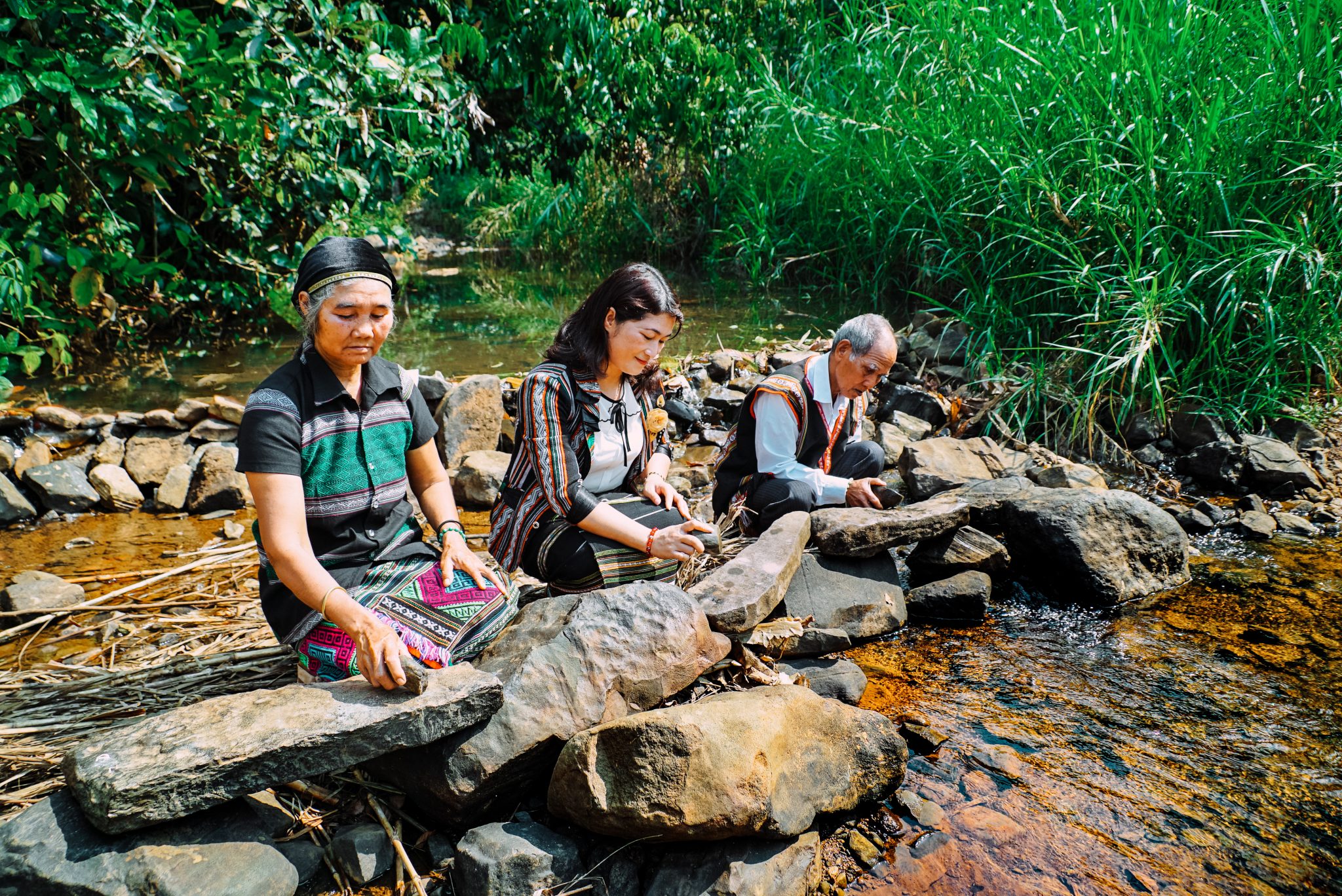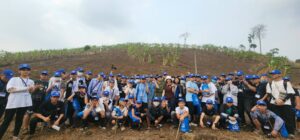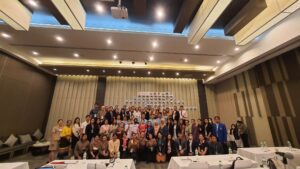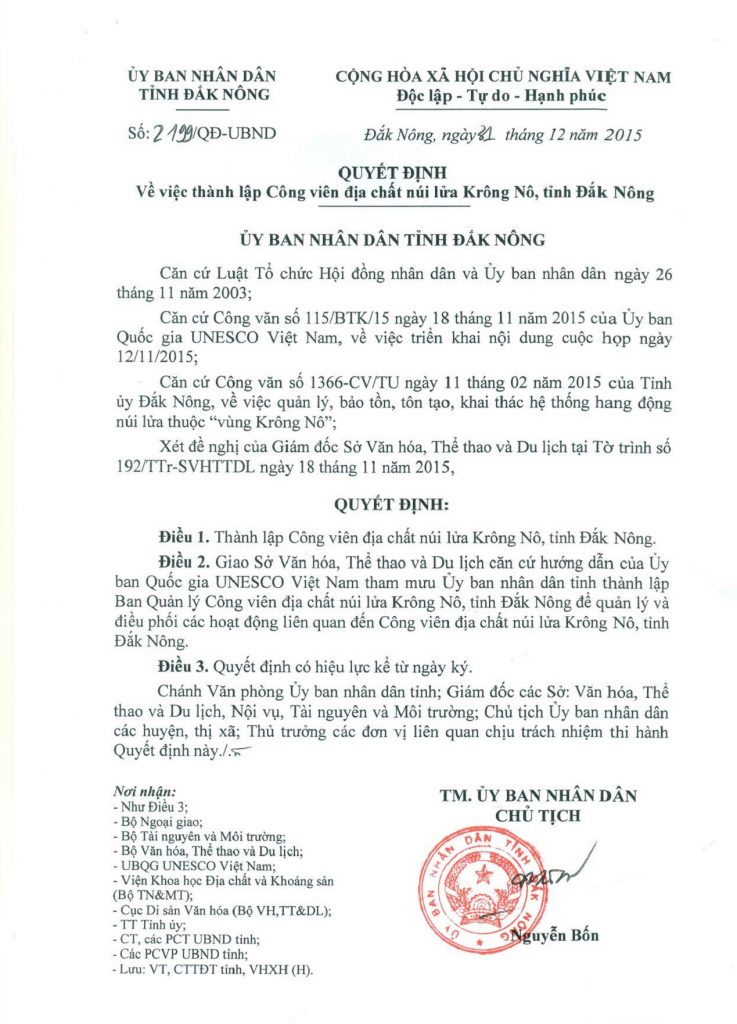The parallel interaction between culture and tourism is a blend that creates a synergistic effect, promoting each other for development. This, both preserve and promote the traditional cultural identity of M’nong, has also contributed to creating a unique feature for sustainable tourism development in Dak Nong.
The Land of Sounds
The Land of Sounds is a slogan where typical and unique geological, cultural and biodiversity values are met. This is the result of listening and observation of scientists in the process of researching the geological, cultural and biodiversity values to recognize Dak Nong as an UNESCO Global Geopark in 2019.
It can be understood that it is the sound of rivers, streams, waterfalls, and magnificent nature; the performance of musical instruments made from raw materials of the mountains and forests such as Goong Rieng, Goong Lu, R’lét, M’Boat… (M’nong); Dinh Nam, Dinh Put, Tac Ta… (Ede); tonality of gongs in festivals, and tonality of performances of Nau M’pring (folk songs); Tam Pot, Yong Yoh… (M’nong), Ai rey, Kut… (Ede), Nao ring luu, Yal yau… (Chao Ma). Among those tunes, Nau M’pring (M’nong folk song) has been recognized by the Ministry of Culture, Sports and Tourism as a national intangible cultural heritage. In particular, the M’nong gong is an area of the Central Highlands Gong Cultural Space that has been recognized by UNESCO as a representative intangible cultural heritage of humanity.
These melodies are the core and soul of the ethnic groups on the M’nong plateau that have been formed and passed down from generation to generation. The melodies become invaluable spiritual assets, creating a treasure of unique, rich and diverse folk music indispensable in the spiritual life of the ethnic minorities here.

Cultural identity in music
Each ethnic group is reflected through specific material and spiritual values, including: language, customs, house architecture, patterns, ancient stories, epics, gongs, and other types of performances, folk songs, etc. In music, it is impossible to make the listener hear that the house on stilts of the Ede is different from that of the M’nong people. Elements of cultural identity in music are intervals, scales, and beautiful notes of folk melodies, ethnic musical instruments, or rhythms, sounds, and performance styles of gongs. gongs… make the difference and uniqueness of each ethnic group.
It’s also a lullaby, or a love song but one thing for sure is that the tunes of each ethnic group have unmistakable differences. For example, Ede’s Ay Ray sounded very excited and agitated; Ba Nar’s polung is soft and gentle; but Tam Pot or Yong Ye of M’nong must be listened carefully to feel the anxiety, including the burning desire from the depths of the human heart. Or for the M’nong gong, there is no fast-paced, bustling rhythm like the K’nah Ede gong set, or the holy thut, echoing like Gia Rai’s Arab gong orchestra. But its rhythm and melody are as floating as the gongs. waves, the echoes seem to reverberate from afar, making listeners feel like they are reliving the legendary old times. That difference makes its own musical color and cultural identity in the music of each ethnic group.

To turn folk music into an art product for tourism
Tourism development is inseparable from the cultural identity of the region, the connection between culture and tourism will promote advantages for tourism to develop. That is the experience of localities with advantages of specific cultural regions, such as the culture of the Northwest ethnic groups, the Central Coast region, the Southern cultural region.
Dak Nong, with the potential advantages of the system of volcanic caves, diverse ecosystems, natural landscapes with unspoiled beauty moving people, in which folk music of the indigenous peoples M’ Farmers, Ede, Ma and other ethnic minorities living in the Geopark have formed a cultural area full of identity and harmony into the “The Land of Sounds”.
The parallel interaction between culture and tourism is a blend that creates a synergistic effect, promoting each other for development; at the same time preserving and promoting the traditional cultural identity and developing sustainable tourism.
Meritorious Artist – Vo Cuong











